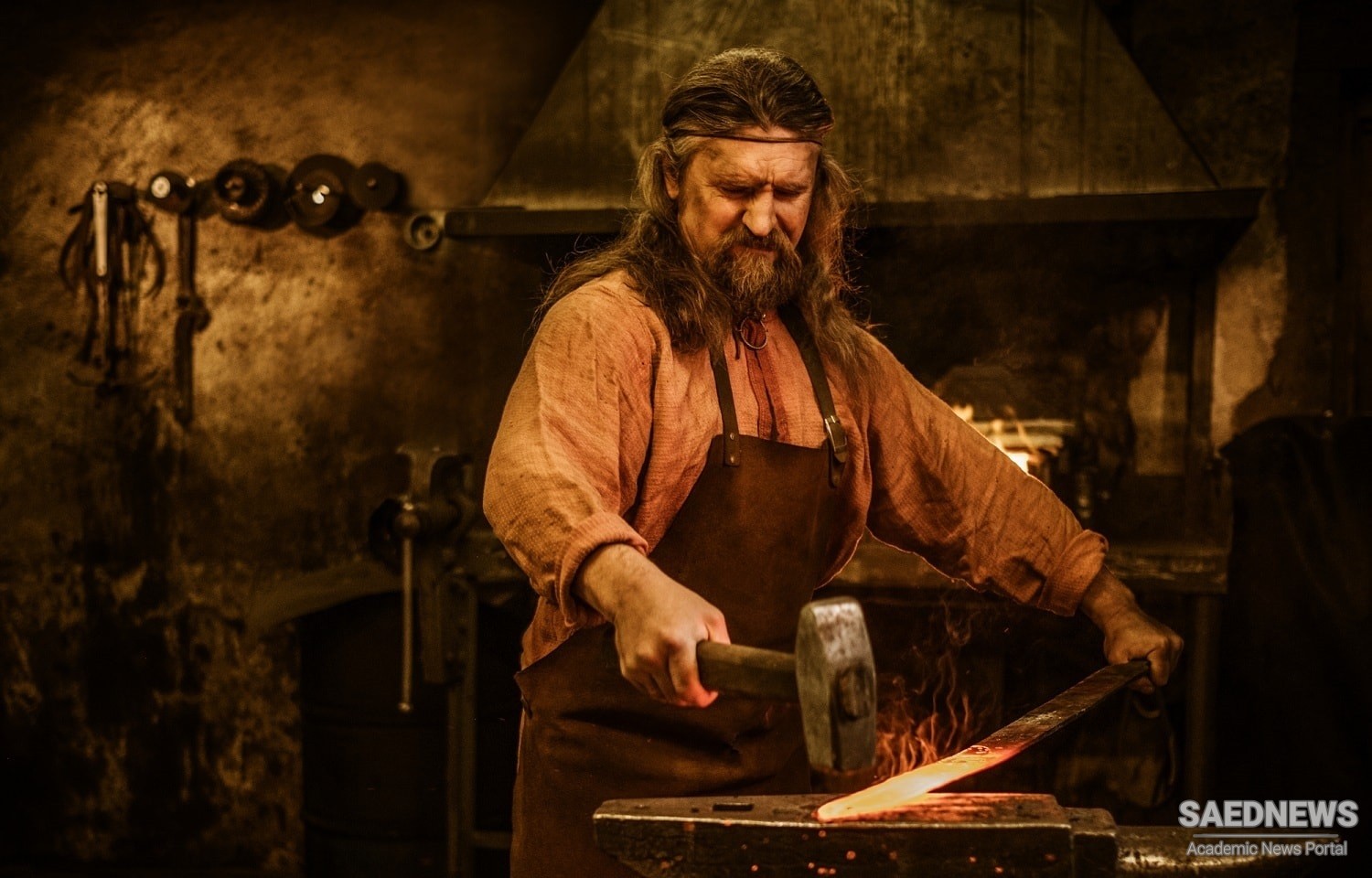The metal iron, which is derived from one or other of several naturallyoccurring ores, can be made to take on different characteristics according to the way it is processed. It has the useful property of being able to combine with other elements to produce an alloy, and a small quantity of some elements will have remarkable effects on its properties. Steel, which is itself a form of iron, can exist in even more forms, all having different chemical or physical properties, or both, and some properties can be varied considerably without changing the chemistry.
Thus carbon steel (an alloy of iron with a small amount of carbon) can be soft enough to be cut by a file, hard and brittle, or hard and tough. Which of these states is obtained depends on how it is processed. A simple tool like a metal-cutting chisel, for example, must be hard at the cutting end, but not so hard that it breaks. At the other end, where it is struck by the hammer, it must be soft, so that there is no risk of pieces breaking off and perhaps injuring the user. By heat treatment (very careful heating to a chosen temperature and then cooling) the chisel is made hard at one end and gradually getting softer towards the other.
Steels, like other metals, have some strangely human characteristics, too. They can be toughened up and have their strength increased by hard work (that is by subjecting them to external forces such as squeezing them between rolls, hammering them, or stretching them by machinery). But if they get too much work they suffer from fatigue. In the end they will break, unless they are given a rest and subjected to processes which remove the fatigue. Other steels are extremely strong and will put up with a tremendous amount of hard work. Three fundamental types of iron are used in commerce: wrought iron (the oldest, historically, but now virtually extinct, although some decorative metalwork is incorrectly described as wrought iron); cast iron (the next in age and still in use); and steel (the youngest historically).
It was man’s ability to make and use tools that first distinguished him from other animals, and iron was crucial in this respect. Other metals were used before iron, the most important being bronze (see pp. 57–67) but when iron came on the scene it gradually took over, since it is better, stronger and more abundant. It was a very good material for weapons as well. Given weapons for the hunt man was assured of food, and the same weapons gave him some protection against his natural enemies. With tools he could more readily cultivate crops and prepare his food, clothes and shelter. So he gained a security which could never have been his had he relied on his hands alone. With this security the human race was able to settle and develop; as it did it found a greater need for tools, and it discovered, too, a multiplicity of new uses for iron.
As the art of ironworking progressed it became possible to harness natural forces more effectively. A windmill or waterwheel could be made of stone or brick and timber (although metal tools were needed to build it), but when ways were found to use the power of steam only metal was strong enough for the machinery involved. And if iron made steam power practicable—and with it the industrial revolution—steam made possible the production of iron on an industrial scale and turned a domestic craft into an important industry. The demand for iron increased as well, for the availability of mechanical power brought a boom in the demand for machinery. Iron, steam power and machinery all helped each other; more of one meant more of the other two.


 Digitally Haunted Generation: The Hidden Mysteries of New Technology
Digitally Haunted Generation: The Hidden Mysteries of New Technology














































